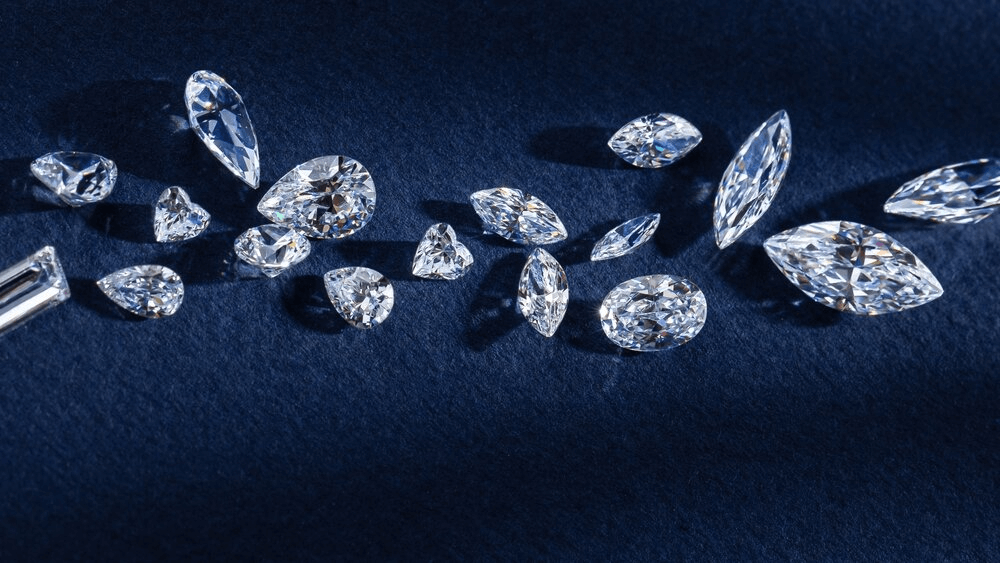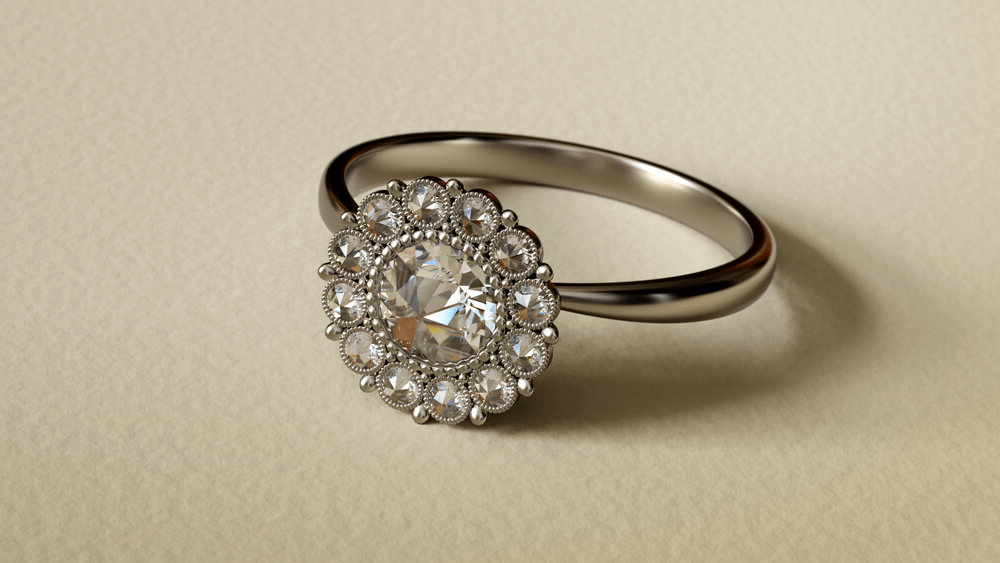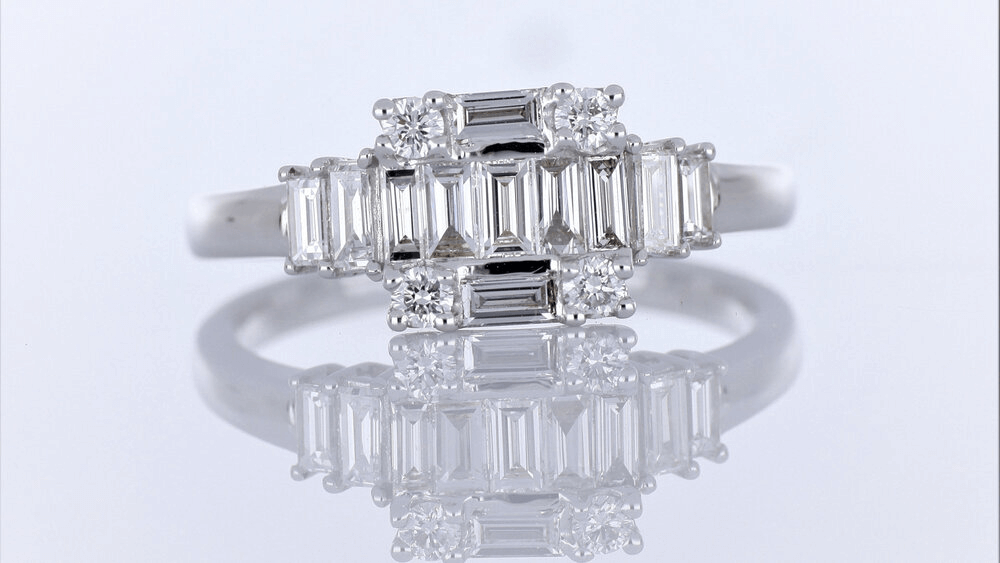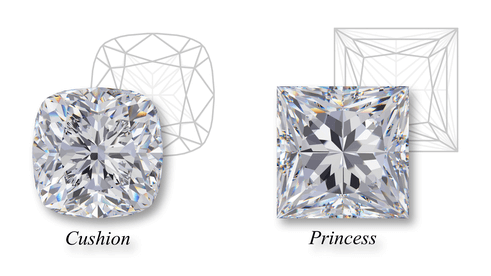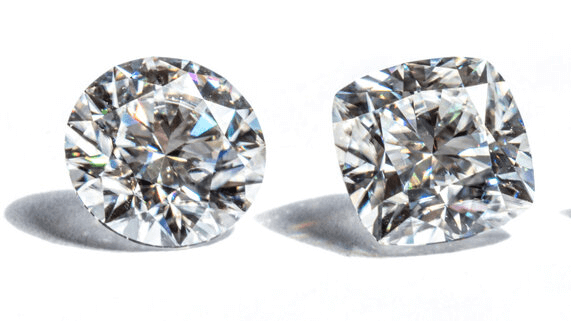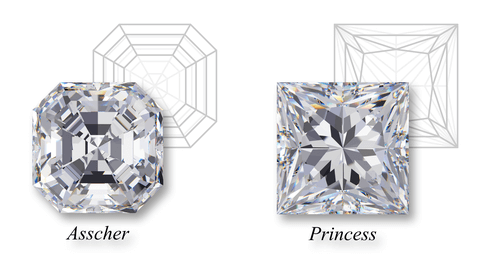Timeless Sparkle: Old Antique Cuts vs. Modern Diamonds

By Gary A.

Edited by Olivia H.
Published Aug 13, 2024
Edited on Mar 31, 2025
We all know that olde world appeal, but does it work for diamonds? Consider this the ultimate head-to-head: Old European cut, Antique and old miner cut vs modern diamonds.

Navigate this guide:
- 7 Quick Tips for Old Diamond Cuts
- Introduction to the Timeless Elegance of Antique Cuts
- The Lure of the Old: European, Miner, and Antique Cuts
- Modern Diamonds: Precision and Perfection
- Comparison: What Sets Them Apart?
- Making the Choice: What You Need to Know
- Our Expert Take
- 7 Frequently Asked Questions About Old European, Antique, and Old Miner Cut Diamonds vs. Modern Diamonds
Before we dive deeper into the specifics of old and antique diamond cuts, here are some practical tips to help guide your decision-making process.
7 Quick Tips for Old Diamond Cuts
Tip 1: Understand the Characteristics of Each Cut:
- Old European Cut: Round in shape, with a high crown, small table, and noticeable culet. It’s less precise than modern cuts, giving it an organic feel.
- Old Miner Cut: Features a square-shaped girdle with slightly rounded corners, resembling the modern cushion cut. It has a large culet, deep pavilion, and small table.
- Antique Cuts: These can vary, but they often have larger facets and a softer appearance than modern cuts.
- Modern Diamonds: Typically have more precise cuts, maximizing brilliance and sparkle. They often lack the visible culet seen in older cuts.
Tip 2: Examine the Diamond Under Different Lighting:
- Antique diamonds were designed to sparkle under candlelight, giving them a soft, romantic glow. Modern diamonds are optimized for brilliance under various lighting conditions. Always view the diamond under multiple light sources to appreciate its true character.
Tip 3: Consider the Color and Clarity:
- Antique diamonds, especially Old Miner cuts, often come in warmer colors (J-R range). While some people appreciate this vintage charm, others prefer the icy white of higher grade diamonds.
- Clarity is essential, but remember that minor inclusions might be as noticeable in antique cuts due to their larger facets.
Tip 4: Prioritize Certification:
- Always ensure that the diamond comes with a certificate from a reputable lab, like the Gemological Institute of America (GIA). This certificate will provide details about the diamond’s cut, clarity, color, and carat weight.
Tip 5: Understand the Provenance:
- The history of an antique diamond can add to its value and allure. If possible, learn about the diamond’s origins, previous owners, or any historical significance.
Tip 6: Check for Durability and Wear:
- Given their age, antique diamonds might show signs of wear. Check for any chips or abrasions, especially around the girdle. While minor wear can add character, significant damage can affect the diamond’s durability.
Tip 7: Work with a Reputable Jeweler:
- Especially when buying antique diamonds, it’s crucial to work with a trusted jeweler who can provide insights into the diamond’s history, quality, and value. They should be knowledgeable about the nuances of antique vs. modern cuts and guide you in making an informed decision.
Now that you’ve got these practical tips, use Jeweler AI below to find the perfect engagement ring that suits your style and budget:
Introduction to the Timeless Elegance of Antique Cuts
Let’s talk about antique diamond cuts – the vinyl records of the jewelry world. They’ve got charm, character, and a whole lot of history. But before you start swooning over these old-timers, it’s time to get real about what you’re signing up for.
The Lure of the Old: European, Miner, and Antique Cuts
Old cuts are like that vintage car your grandpa keeps in the garage. They’re cool to look at, but you might not want to drive them every day.
Old European Cut: A Glimpse into Historical Brilliance
The Old European Cut is the great-grandaddy of modern round brilliants. It’s got a chunky crown, a small table, and a whole lot of personality. But let’s be honest – it’s about as sparkly as a disco ball in a power outage compared to its modern descendants.
The Charm of Old Miner Cuts: Squaring the Brilliance
Old Miner Cuts are the hipsters of the diamond world. They’re square-ish, they’ve got high crowns, and they’re all about that “soft” glow. If you’re into moody lighting and sepia-toned Instagram filters, you might dig these. But if you want your ring to be seen from space? Maybe not your best bet.

Diverse Antique Cuts: Beyond the Standard Shapes
From Rose Cuts to Cushion Cuts, antique diamonds come in all shapes and sizes. They’re like the eccentric aunts and uncles of the diamond family – full of stories and charm, but maybe not the ones you want to bring to every party.
Modern Diamonds: Precision and Perfection
Now, let’s talk about the new kids on the block. These aren’t your great-grandma’s diamonds.
The Evolution of Cut: From Old to New
Modern cuts are like the smartphone to the antique cut’s rotary dial. They’re precise, they’re engineered for maximum sparkle, and they’re designed to make your jaw drop. It’s not just progress – it’s a full-on sparkle revolution.
Why Modern Diamonds Dominate the Market
There’s a reason you see more modern cuts in jewelry stores than antiques. They’re brighter, they’re more brilliant, and they’re cut to make the most of every ray of light. It’s like comparing a laser to a candle – both give light, but one’s going to get a lot more attention.
Comparison: What Sets Them Apart?
Let’s break it down, shall we?
Aesthetic Differences: Beauty in the Eye of the Beholder
Antique cuts have a soft, romantic glow. Modern cuts have fire and brilliance that can be seen from the next zip code. It’s like choosing between a candlelit dinner and a fireworks display. Both are nice, but one’s definitely going to be more noticeable.
Value and Investment: Calculating the Worth
Here’s the tea: antique cuts might be rare, but that doesn’t always translate to higher value. Modern cuts are often more desirable because, well, they’re showstoppers. It’s like comparing a rare, first-edition book to a best-seller – the rare one might be cool, but more people want the popular one.
Making the Choice: What You Need to Know
Before you dive into the world of diamond cuts, here’s what you need to know.
Considerations for Purchasing Antique Diamond Rings
If you’re dead set on an antique cut, go for it! Just know what you’re getting into. These aren’t your average sparklers, and they might need a little more TLC. Plus, be prepared for some raised eyebrows and “oh, that’s… interesting” comments from your less historically inclined friends.
Merging Traditions: The Rise of Hybrid Cuts
Can’t decide? There are some clever folks out there making hybrid cuts that combine old-school charm with new-school sparkle. It’s like having your cake and eating it too – if your cake was made of diamonds.
Sustainability and Ethical Sourcing in the Diamond Industry
Whether you go old school or new age, make sure your diamond’s got a clean record. Nobody wants a bling with baggage. It’s a lot easier to get an ethical diamond now than it is to find an ethical antique diamond since industry-changing regulations only came into place in the late 90s and early 2000s.
Our Expert Take
Look, antique cuts are cool. They’ve got history, they’ve got character, and they’re definitely conversation starters. But if you’re looking for an engagement ring that’s going to make people need sunglasses indoors? You might want to stick with the modern cuts.
Remember, at the end of the day, the most important thing is that you love your ring. Whether it’s as old as the hills or fresh off the cutting wheel, it’s your symbol of love. Just don’t be surprised if your antique-cut ring doesn’t blind the neighbors like you hoped it would. But hey, that’s what car headlights are for, right?
7 Frequently Asked Questions About Old European, Antique, and Old Miner Cut Diamonds vs. Modern Diamonds
- Q: What are the main differences between Old European, Antique, and Old Miner cut diamonds and modern diamonds?
- A: Old European, Antique, and Old Miner cut diamonds are characterized by their unique shapes, larger facets, and deeper cuts, giving them a distinctive, softer sparkle reminiscent of candlelight. Modern diamonds, on the other hand, are cut with precision to maximize brilliance, often resulting in a more intense sparkle and a “colder” appearance.
- Q: Why do some prefer Antique cuts over Modern cuts?
- A: Antique cuts, such as the Old European and Old Miner, are prized for their historical significance, unique charm, and the romantic, soft glow they emit. Their individuality and the stories they carry often appeal to those looking for a ring with character and a connection to the past.
- Q: Are Antique diamonds less brilliant than Modern diamonds?
- A: Antique diamonds might not have the same level of brilliance as modern cut diamonds due to their larger facets and different cut proportions. However, they possess a unique type of sparkle and fire, often considered more subtle and romantic.
- Q: How does the color and clarity of Antique cuts compare to Modern cuts?
- A: Antique diamonds, especially those cut before the advent of modern grading systems, often exhibit warmer colors and may have more visible inclusions. While some view this as part of their charm, others may prefer the icy white and flawless appearance of higher-graded modern diamonds.
- Q: Is it important to get a certificate for an Antique diamond?
- A: Yes, obtaining a certificate from a reputable lab, such as the GIA, is essential even for antique diamonds. It provides an unbiased assessment of the diamond’s 4Cs (Cut, Color, Clarity, and Carat), ensuring you understand the quality and characteristics of the stone you are purchasing.
- Q: Can Antique diamonds show signs of wear, and does this affect their value?
- A: Antique diamonds may show signs of wear, such as minor chips or abrasions, especially around the girdle. While this can sometimes affect their value, minor wear often adds to the diamond’s story and authenticity, making it more appealing to some buyers.
- Q: How can I ensure I’m making a good investment when buying an Antique diamond engagement ring?
- A: To make a good investment, focus on diamonds with certificates from reputable labs, consider the diamond’s overall condition and rarity, and choose a style that is timeless. Working with a knowledgeable and reputable jeweler who specializes in antique diamonds can also help ensure that you’re making a wise choice.
Discover the unique charm of Old European cut diamonds with Jeweler AI – your gateway to the perfect engagement ring.
FOLLOW-UP GUIDE SERIES

